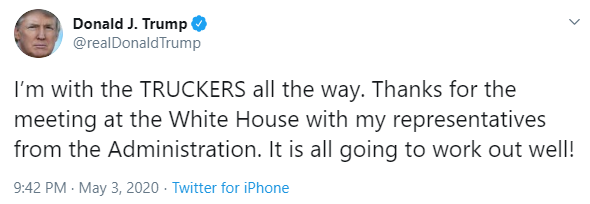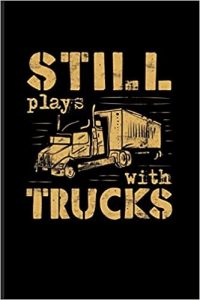One of the biggest expenses a trucking company experiences is onboarding new drivers. Studies show that each new driver costs approximately $10,000 to recruit, onboard, and train. Retention becomes a huge factor in cutting costs.
Dan Baker’s Cultural Relationship Program teaches that improving the relationship between management, operations, and drivers creates a positive company culture that is the key to success.
A foolproof way to create a more loyal fleet is to encourage the cultural relationship between dispatchers and truck drivers. Both should understand how the other operates and be able to maintain open communication.

Money-making truck drivers love being dispatched on those loads that require you to travel 2,000 miles in 4 days. Loads with more miles ensure more money for the truck driver and their employer.
That is not always the case, however. Sometimes, there are no good loads to dispatch.
In the case of bad freight, look for other ways to improve efficiency. Use these tips from logistics leadership to maximize your most valuable resource, your drivers.
Average Trucker Pay
In 2019, the average pay for truck drivers was roughly $58,000, up from $52,000 in 2017. Truck drivers make about $10,000 more than the average earner. But everyone likes to earn extra money, right?
Creating an environment where your drivers will not only be successful, but will also thrive, will encourage loyalty and long-term retention. Infinit-I Workforce Solutions offers numerous training courses that will allow continual education of any size fleet.
Encourage Drivers Maximize Hours
Some truck drivers fully enjoy the rush of running the highways, maxing out their hours every day. Those drivers typically make the most money.
Some drivers prefer to take extended breaks, mosey around truck stops, sleep late, etc. All the time they spend idle is money lost for that driver and your company.
Make sure they understand the basics concepts of hours of service and set the expectation with this training course:

Infinit-I Workforce Solutions Training Catalog – Page 21 – CSA Hours of Service Basics
Interpreting the BOL
One of the worst things a trucking company can experience is OS&D. Overage, Shortage, & Damaged – This occurs when the freight amount is incorrect or damaged and the receiver will not accept the shipment.
While your company probably has insurance to protect you from losses, these claims take time. An OS&D incident can stop a truck for several days while a claim is being sorted. When you make money per loaded mile, an idle truck can cost your company a lot of money.
Make sure your drivers know how to read a BOL for every type of load they haul. As soon as they are loaded, they should have a thorough understanding of the shippers/receiver’s expectations and condition the load should arrive in.
This type of proactive training can save money and prevent loss of miles and revenue.

Trip Planning
Most truck drivers know the importance of trip planning, but some may not be able to execute a trip plan properly. Sharing these tips with your drivers will start a conversation about improvement.
- Get to the destination city as quickly and safely as possible. It is always a good idea for a driver to put more miles on the front end of a trip. It is better for a truck driver to knock out 90% of the trip on pickup day than have too many miles left on delivery day.
- If your receiver doesn’t penalize you for early loads, encourage drivers to check in early. Chances are, they will take your freight before the actual appointment, allowing your driver to move on to another load.
- Avoid dispatching loads with too much time on them. It is always better to have a driver rolling than getting paid for sitting still.
- You drivers should always check the entire route for big cities, business loops, high traffic areas, construction, and weather as soon as they are dispatched. They must be able to identify areas that may require a reroute. Encourage them to communicate those concerns with operations.
- Eventually, the FMCSA’s HOS changes will allow drivers to take their 30-minute break while on duty. When in effect, drivers will be able to take their 30-minute break while fueling or being loaded/unloaded. Emphasis the importance of restful breaks, however. This is a tool to help drivers utilize their time more efficiently, not drive fatigued.
On-Time Delivery
Some truck drivers don’t understand the consequences of late delivery until its too late. Most receivers will consider late drivers a ‘work-in.’
Depending on their volume, that driver could be sitting for hours or even days waiting on an opening. This not only creates a loss of miles for the driver but also constitutes a loss in revenue for your company and compromises your reputation with that shipper and receiver.
Avoid Obstacles
Booking loads with unpaid deadhead can cost your company thousands of dollars of it happens too often. You should always negotiate empty miles with your customer. If not, look for backhaul loads. You may even reach out to brokerages to make up for the loss of revenue.
When booking loads, always check to confirm your driver will have enough time to deliver on time. Be aware of the distance of the trip, the route conditions, and the number of hours available to avoid a repower. Sending another driver to relay a load will only cost every person involved time and money.

Most importantly, encourage their safety. Drivers should be made aware that they don’t have to drive excessive speeds to make more money. The best way to improve your fleet’s performance is communication and continuing education.
Contact Infinit-I Workforce Solutions to find out how we can enhance your safety culture, improve your drivers’ behaviors, and save you money. Ask about your Complimentary 30-Day Trial!













































